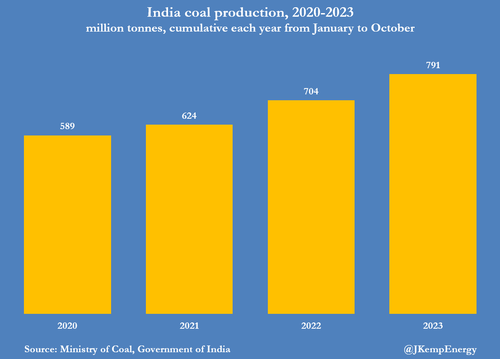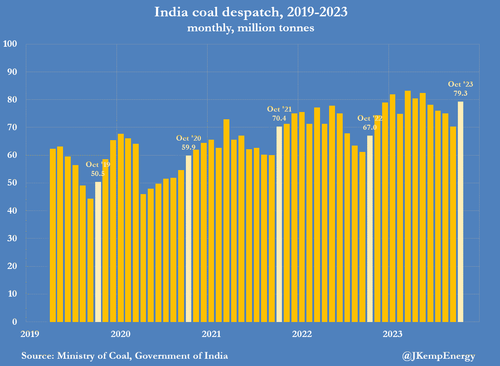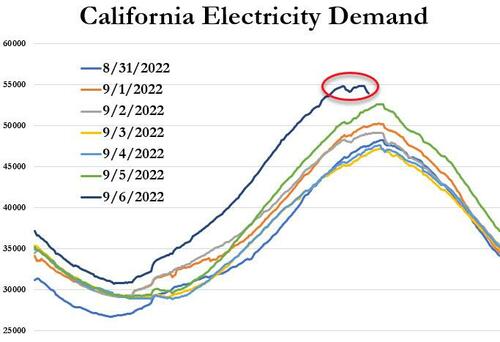By John Kemp, Senior Market Analyst
India produced a record amount of electricity from coal in October to make up for a shortfall in hydro generation following lower-than-normal monsoon rains.
Coal remains fundamental to the country’s energy security, despite rapid deployment of wind and solar generation, underscoring the challenge of reducing emissions.
Notwithstanding the ambitions expressed at the UN climate conference in Dubai, for the foreseeable future, India will depend on its mines and rail network to satisfy rapidly growing electricity demand and ensure reliability.
Total electricity demand met increased by 24 billion kilowatt-hours (kWh) (+21%) in October compared with the same month a year earlier.
But hydroelectric generation fell by 5 billion kWh (-30%) as unusually low monsoon rainfall depleted water resources.
Total precipitation across most of India, the Himalayas and Tibet has been less than 80% of the long-term average since the start of the rainy season in June.
The volume of water stored in the 150 reservoirs monitored by India’s Central Water Commission was 20% below the level in 2022 and 7% below the average for 2013-2022 on November 23.
Reservoirs are managed to provide a mix of hydroelectricity and irrigation; depletion would have been even more severe if hydro generation had not been curbed to save water for agriculture.
Despite big increases in installed capacity, solar and wind generation were unable to make up the deficit. Wind increased by 0.3 billion kWh (+10%)…
…. while solar was up 1.3 billion kWh (+16%).
Instead the electricity system turned to extra gas (1.6 billion kWh, +103%) and especially coal (28 billion kWh, +33%) to meet demand.
Coal-fired generators produced a seasonal record of 111 billion kWh in October 2023 up from 84 billion kWh in October 2022.
Coal satisfied 80% of electricity demand up from 73% a year earlier, while the hydro share fell to 9% from more than 15%.
COAL REMAINS KING
India’s installed solar capacity has risen by almost 47 million kilowatts (+24% per year) while wind capacity is up by 9 million kilowatts (5% per year) since the start of 2018.
Over the same period, coal generation capacity has increased by just 9 million kilowatts (1% per year) and gas-fired capacity has been essentially unchanged.
But coal units have much higher utilization, and are particularly critical to meet load in the shoulder seasons of March-April and September-October, when renewable generation is lower but air-conditioning load is relatively high.
In the final analysis, India’s electricity system remains overwhelmingly reliant on coal for baseload and ensuring reliability.
To cope with rising electricity demand and poor hydrological conditions, India boosted mine production and the volume hauled by the railways to generators to record rates in October.
Coal output was up by 13 million tonnes in October and by a total of 87 million tonnes since January compared with a year earlier.
The volume dispatched to power producers was up 8 million tonnes in October and by 35 million tonnes in the first ten months.
Even so, coal stocks at generators were severely depleted in September and October, and by the end of October had been reduced to just 7.5 days at the required level.
Inventories had been reduced near to three-year lows and close to levels that sparked the fuel crisis and blackouts in September 2021.
Coal production and dispatch will have to remain high throughout the winter, when consumption is lower, to rebuild stocks ahead of the next shoulder season.
Loading…
This post was originally published on this site
Related posts:
Views: 0
 RSS Feed
RSS Feed

















 December 1st, 2023
December 1st, 2023  Awake Goy
Awake Goy 

















 Posted in
Posted in  Tags:
Tags: 
















